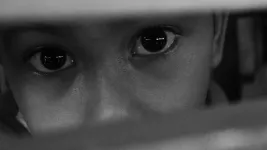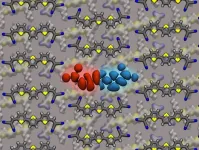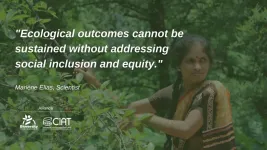(Press-News.org) Children with documented child protection concerns are four times as likely to die before they reach their 16th birthday, according to confronting new research from the University of South Australia.
The world first study identifies the extreme seriousness of familial child abuse and neglect, measuring for the first time the excess risk of death that children with documented child protection concerns face.
Child abuse and neglect are prominent worldwide public health concerns affecting 20-50 per cent of children worldwide. In Australia, 20-25 per cent of children endure child maltreatment.
Published in JAMA Network Open today, the study analysed deidentified data on more than 600,000 children born in South Australia between 1986 and 2017, comparing the death rates of children who had documented child protection concerns recorded by the SA Department for Child Protection, and children with no such concerns.
While all children encountering the child protection system were at increased risk, boys with child protection concerns were more than four times as likely to die before the age of 16 than boys with no documented child protection concerns; the excess risk for girls was also high at 3.4 times.
The study found that children with the most serious child protection concerns ¬ those who had ever been placed in our-of-home care were five times as likely to die before their 16th birthday than children with no child protective system contact. A minority of these deaths (27%) occurred while the child was in care.
After adjusting for other adversities (such as poor birth outcomes, young age of mother, and socioeconomic status), the rates directly attributable to chid maltreatment were 3.4 times for males and 2.5 times for females, and for children who had spent some time in out-of-home care 3.8 times that of children with no child protection system contact.
Lead researcher, UniSA's Professor Leonie Segal says the excess risk of death is extreme.
"The association between child maltreatment and death has generally been studied through detailed case reviews and coroners' inquests which, while identifying the shocking impact of familial child abuse and neglect, has not been studied at the population level until now," Prof Segal says.
"Drawing on more than 30 years of data, our study found that children with documented child protection concerns are at considerably higher risk of premature death before their 16th birthday.
"These children are known to child protection agencies, but also likely in contact with a range of health workers - GPs, paediatricians, maternal and child health workers, as well as child-care workers/early childhood educators and school teachers - so there are many people in the child's network who can identify concerns.
"But where are the services that can disrupt these disastrous outcomes?
"Knowing the extreme seriousness of the consequences that could follow, the imperative for a more effective service response is clear, and never more so than during the COVID-19 pandemic with the heightened stresses on families potentially exacerbating child protection concerns."
The importance of child maltreatment in child deaths has been under-stated in cause of death coding practices. The study found that coding of cause of death rarely identified family circumstances. In nearly 30 years of data and 1635 child deaths, child maltreatment was coded as a contributing cause in just two children's deaths.
Professor Segal says that these coding practices need to change.
"There is rich information from coroners' inquests, police reports and the like, on most child deaths ¬- information that needs to be better incorporated into coding practices. This would help focus attention on these disturbing and potentially preventable child deaths, and the need for a more effective service response," Prof Segal says.
"The service response must start early in life and be proportionate to the highly distressed circumstances of these most vulnerable children and their struggling families.
"This will require scaling up of services in terms of intensity, inter-disciplinary nature, skill-level and reach to better support our most vulnerable children, who desperately need our help.
"Too many children are suffering; too many children have become a statistic.
"If we are to make a difference to the shocking outcomes faced by children suffering child maltreatment, policy must be informed by accurate and transparent data.
"When government departments - commonwealth and state - and associated child and family health and human services can more effectively work together; we will be better able to prevent these avoidable child deaths."
INFORMATION:
Notes to Editors:
* Citation: Leonie Segal, J. Doidge, J. Armfield, E. Gnanamanickam, D. Preen, D Brown, H. Nguyen; 'Association of Child Maltreatment With Risk of Death During Childhood in South Australia; JAMA Network Open 2021;4(6):e2113221. doi:10.1001/jamanetworkopen.2021.13221
Contacts:
Lead researcher: Professor Leonie Segal M: +61 418 300 805 E: Leonie.Segal@unisa.edu.au
Media contact: Annabel Mansfield T: +61 8 8302 0351 M: +61 417 717 504
E: Annabel.Mansfield@unisa.edu.au
A combination of ibrutinib and venetoclax was found to provide lasting disease remission in patients with newly diagnosed chronic lymphocytic leukemia (CLL), according to researchers at The University of Texas MD Anderson Cancer Center. Findings from the single-institution Phase II study were published today in JAMA Oncology and provide the longest follow-up data on patients treated with this drug regimen.
Lead researchers included Nitin Jain, M.D., associate professor of Leukemia, William Wierda, M.D., Ph.D., professor of Leukemia; and Varsha Gandhi, Ph.D., department chair ad interim of Experimental Therapeutics.
MD Anderson researchers previously reported results from this study showing that ibrutinib ...
The 30,000 or so genes making up the human genome contain the instructions vital to life. Yet each of our cells expresses only a subset of these genes in their daily functioning. The difference between a heart cell and a liver cell, for example, is determined by which genes are expressed--and the correct expression of genes can mean the difference between health and disease.
Until recently, researchers investigating the genes underlying disease have been limited because traditional imaging techniques only allow for the study of a handful of genes at a time.
A new technique developed by Jun Hee Lee, Ph.D., and his team at the University of Michigan Medical School, part of Michigan Medicine, uses high-throughput ...
A study published in the June 10, 2021 issue of Cell describes a remarkable new mechanism by which the body's own immune system can eliminate cancer cells without damaging host cells. The findings have the potential to develop first-in-class medicines that are designed to be selective for cancer cells and non-toxic to normal cells and tissues. If successful, this discovery may improve the practice of precision medicine by ensuring the right drug is delivered at the right dose at the right time.
Our immune system plays a critical role in our ability to fight off diseases ...
Organic semiconductors have earned a reputation as energy efficient materials in organic light emitting diodes (OLEDs) that are employed in large area displays. In these and in other applications, such as solar cells, a key parameter is the energy gap between electronic states. It determines the wavelength of the light that is emitted or absorbed. The continuous adjustability of this energy gap is desirable. Indeed, for inorganic materials an appropriate method already exists - the so-called blending. It is based on engineering the band gap by substituting atoms in the material. This allows for a continuous tunability as, for example in aluminum gallium arsenide semiconductors. Unfortunately, this is not transferable to organic semiconductors ...
Leipzig. Soot particles from oil and wood heating systems as well as road traffic can pollute the air in Europe on a much larger scale than previously assumed. This is what researchers from the Leibniz Institute for Tropospheric Research (TROPOS) conclude from a measurement campaign in the Thuringian Forest in Germany. The evaluation of the sources showed that about half of the soot particles came from the surrounding area and the other half from long distances. From the researchers' point of view, this underlines the need to further reduce emissions of soot that ...
It is generally agreed that sperms "swim" by beating or rotating their soft tails. However, a research team led by scientists from City University of Hong Kong (CityU) has discovered that ray sperms move by rotating both the tail and the head. The team further investigated the motion pattern and demonstrated it with a robot. Their study has expanded the knowledge on the microorganisms' motion and provided inspiration for robot engineering design.
The research is co-led by Dr Shen Yajing, Associate Professor from CityU's Department of Biomedical Engineering (BME), and Dr Shi Jiahai, Assistant Professor of the Department of Biomedical Sciences (BMS). Their findings have been published in ...
An electrode coating just one molecule thick can significantly enhance the performance of an organic photovoltaic cell, KAUST researchers have found. The coating outperforms the leading material currently used for this task and may pave the way for improvements in other devices that rely on organic molecules, such as light-emitting diodes and photodetectors.
Unlike the most common photovoltaic cells that use crystalline silicon to harvest light, organic photovoltaic cells (OPVs) rely on a light-absorbing layer of carbon-based molecules. Although OPVs cannot yet rival the performance of silicon cells, they could be easier and cheaper to manufacture at a very large scale using ...
The type of material present under glaciers has a big impact on how fast they slide towards the ocean. Scientists face a challenging task to acquire data of this under-ice landscape, let alone how to represent it accurately in models of future sea-level rise.
"Choosing the wrong equations for the under-ice landscape can have the same effect on the predicted contribution to sea-level rise as a warming of several degrees", says Henning Åkesson, who led a new published study on Petermann Glacier in Greenland.
Glaciers and ice sheets around the world currently lose more than 700,000 Olympic swimming pools of water every day. Glaciers form by the transformation of snow into ice, which is later melted by ...
With the start of the United Nations' Decade on Ecosystem Restoration, which runs through 2030, a tremendous amount of money and effort will be put into re-growing forests, making over-exploited farmland productive, and reviving damaged marine environments. This is a good, and vital, initiative. Without quick action to clean up the fallout of humanity's scorched-earth economic systems, goals on hunger, biodiversity and climate will be unattainable.
But in examining restoration projects already underway across the globe, a group of scientists has found that restoration action is at risk of failure if it doesn't make ...
Palaeoclimatologists study climate of the geological past. Using an innovative technique, new research by an international research team led by Niels de Winter (VUB-AMGC & Utrecht University) shows for the first time that dinosaurs had to deal with greater seasonal differences than previously thought.
De Winter: "We used to think that when the climate warmed like it did in the Cretaceous period, the time of the dinosaurs, the difference between the seasons would decrease, much like the present-day tropics experience less temperature difference between ...





